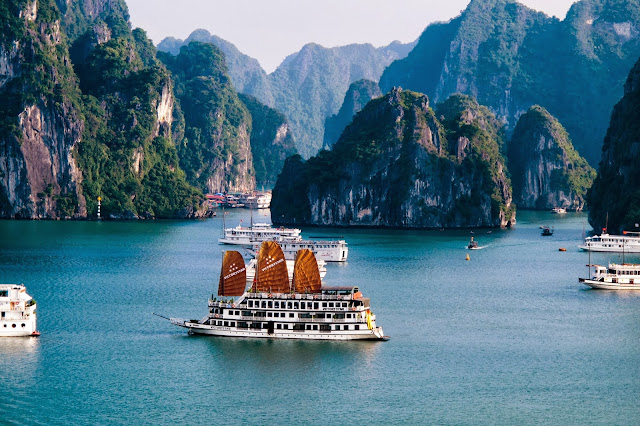Halong Bay is a beautiful natural wonder in Vietnam, located in Quang Ninh province, Vietnam. One of the great natural wonders of Asia. Ha Long Bay one of Vietnam’s most popular places to visit.. The bay features thousands of limestone karsts and isles in various sizes and shapes.Halong Bay has an area of around 1,553 km2, including 1,960–2,000 islets, most of which are limestone. Ha Long Bay is a limestone area with many wonderful caves, such as Dau Go, Bo Nau, Trong, Trinh Nu and Sung Sot Cave, each with their own fascinating legend.
Halong Bay has twice been recognized by UNESCO as a World Natural Heritage Area for its exceptional scenic beauty and outstanding geological and geomorphic values. In 2012, the New 7 Wonders Foundation officially named Halong Bay as one of new seven natural wonders of the world. Hạ Long Bay is also a member of the Club of the Most Beautiful Bays of the World.
Ha Long is considered as the most beautiful scenery in Vietnam in Vietnam.
Visitors have constantly marveled at Halong Bay natural beauty. Swimming, kayaking, hiking and of course photography are favorite pastimes for visitors to Halong Bay.

Halong Bay has twice been recognized by UNESCO as a World Natural Heritage Area for its exceptional scenic beauty and outstanding geological and geomorphic values. In 2012, the New 7 Wonders Foundation officially named Halong Bay as one of new seven natural wonders of the world. Hạ Long Bay is also a member of the Club of the Most Beautiful Bays of the World.
Ha Long is considered as the most beautiful scenery in Vietnam in Vietnam.
Visitors have constantly marveled at Halong Bay natural beauty. Swimming, kayaking, hiking and of course photography are favorite pastimes for visitors to Halong Bay.





















































































